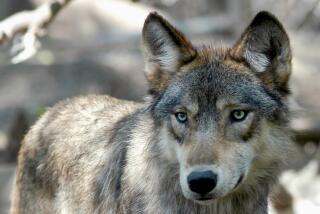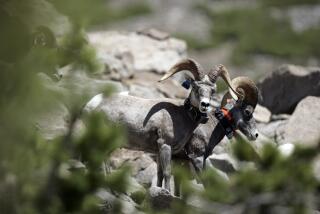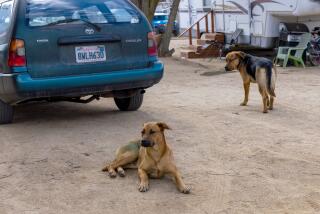Antelopes go from pests to a plague in Texas
BROWNSVILLE, TEXAS — South Texas ranchers brought nilgai antelope from a California zoo decades ago, when it became fashionable to stock their sprawling acreage with exotic quarry.
These days the species native to India and Pakistan is not so much a rarity in South Texas as a nuisance. For cattle ranchers they are a possible nemesis, threatening to spread a deadly tick to the herds. Federal wildlife officials say the nilgai compete with native Rio Grande Valley species for food and trample the brush they are trying so hard to preserve.
The fast-running, 600-pound antelopes have wandered all around the region, where they picked up a variety of fever tick from Mexico that once nearly wiped out American cattle. The ticks have spread among the population and threaten the cattle.
Federal officials said they had no choice but to hire a helicopter and gunner to slaughter them. Thirty-seven were killed during the two-day hunt in March on a portion of the Lower Rio Grande Valley National Wildlife Refuge that runs along the border.
“It’s about the only way you can do them,” said Edwin Bowers, director of field operations for the federal tick eradication program. “You can’t hunt them on the ground successfully; they’re extremely wary and fast, and you can’t get close to them. These animals can spread the ticks to places where there are cattle. We’re obligated to get the ticks off of them however we can.”
The USDA has been battling the ticks (Boophilus microplus and Boophilus annulatus) for a century, enlisting cowboys to patrol a narrow tick eradication zone that runs about 500 miles along the eastern Texas-Mexico border.
The cowboys rope cattle and horses that may have wandered into the zone from Mexico so they can be quarantined and “dipped” for ticks. The ticks have been contained in the zone since the 1940s.
The antelope cannot be similarly treated because it’s too hard to catch them.
At the turn of the 20th century, cattle ticks wiped out 90% of U.S. cattle industry with the deadly Texas fever, said Larry Cooper, spokesman for the USDA’s Animal and Plant Health Inspection Service.
“It was devastating,” he said. “It virtually ended the old-time cattle drives.”
The storied King Ranch -- at 825,000 acres the largest in the United States -- first brought the nilgai to Texas and boasts its current 10,000 head as a success in game management.
Its website advertises hunts at $500 per gun per day plus a harvest fee of $1,000 per nilgai bull or $300 per nilgai cow.
Other Texas ranches likewise advertise “safari” hunts for those who don’t want to go abroad.
Carlton McCain, owner of La Atravesada Ranch in Kenedy County, said a population that started with about 15 nilgai was now about 30,000.
“I think they’re determining they might be [a problem] because of the competition with the cattle,” he said. McCain said other ranchers’ cattle had wandered onto his property because the nilgai had torn up the fences.
The larger Kenedy Ranch, which surrounds his, contracts a helicopter hunter and portable butcher house to kill off some of the nilgai. McCain said the meat is sold elsewhere for about $16 a pound.
Refuge spokeswoman Nancy Brown said nilgai in Texas proliferate because there are no tigers or other natural predators.
“Certainly a coyote is not going to take a nilgai down,” she said. “Nilgai are not a native species. They don’t belong on the Texas landscape.”
She said the helicopter hunts made sense because nilgai won’t come to bait like deer.
“We’re able to treat deer with treated corn, but because nilgai won’t come to it you would have to literally dip every one of those nilgai every two weeks, which is not feasible.”
But Stephanie Boyles, a wildlife biologist for People for the Ethical Treatment of Animals, balked at shooting the antelope.
“Those animals didn’t ask to be abandoned there,” she said. “The U.S. Fish and Wildlife Service is asking them to pay the ultimate price for someone else’s mistake.... No one’s going to be able to shoot an animal and have them die a quick death. It’s going to get shot and wander off and die a slow and painful death.”
The nilgai carcasses were butchered and the meat was donated to the Food Bank of the Rio Grande Valley.
Food Bank director Terri Drefke said the meat was appreciated as a lean source of protein.
“We don’t ever get enough protein,” she said. “Unfortunately, the nilgai had to be killed, but we’re happy that we’re able to take the meat. This meat will go a long way in feeding people.”
More to Read
Sign up for Essential California
The most important California stories and recommendations in your inbox every morning.
You may occasionally receive promotional content from the Los Angeles Times.










